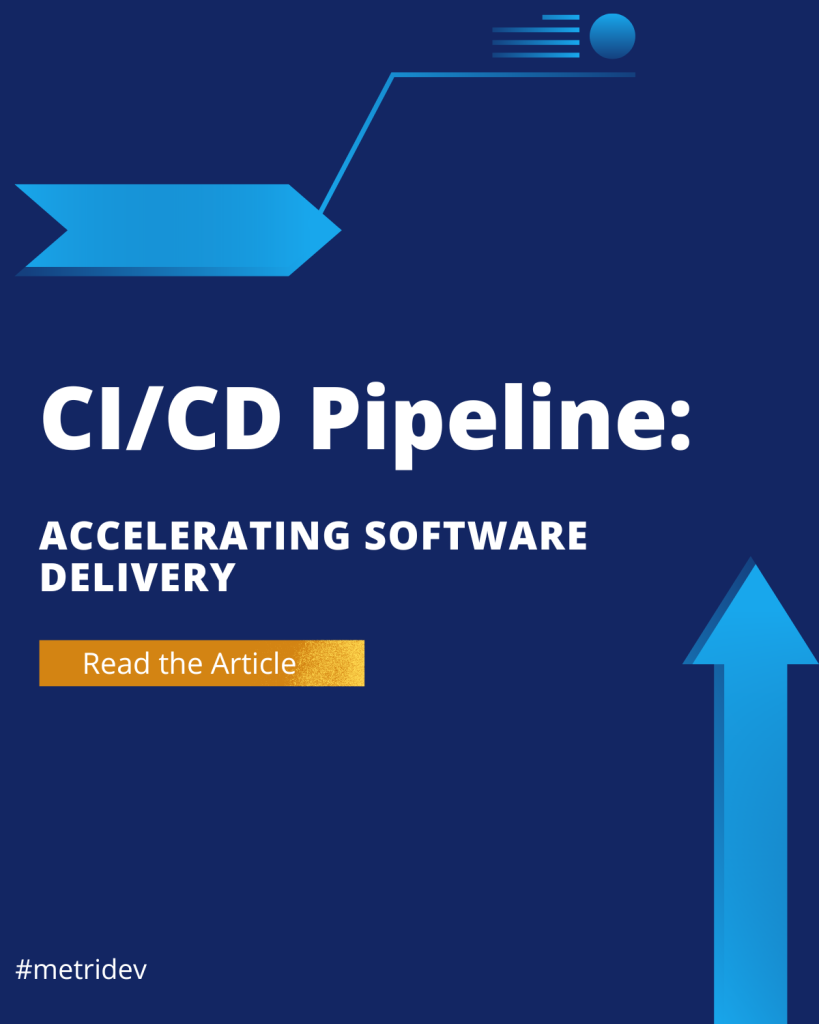Introduction
In the rapidly evolving world of software development, DevOps has emerged as a game-changer, revolutionizing the way organizations approach the software delivery process. As DevOps practices become more widely adopted, the need for effective measurement and evaluation of their success has become increasingly crucial. This is where DevOps Key Performance Indicators (KPIs) come into play. These carefully selected metrics serve as a roadmap to success, enabling organizations to track their progress, identify areas for improvement, and make data-driven decisions that drive continuous optimization.
What are KPIs in DevOps?
DevOps Key Performance Indicators (KPIs) are quantifiable measures that help organizations assess the effectiveness and efficiency of their DevOps practices. Consequently, these metrics provide a clear and objective way to evaluate the success of DevOps initiatives, ensuring that the desired outcomes are being achieved. Moreover, DevOps KPIs can encompass a wide range of areas, from deployment frequency and lead time to customer satisfaction and cost savings.
Why are KPIs important in DevOps?
DevOps Key Performance Indicators (KPIs) play a crucial role in the success of DevOps initiatives through various means. Firstly, they align with business objectives, ensuring that DevOps efforts directly contribute to the organization’s overarching goals. Additionally, DevOps KPIs drive continuous improvement by facilitating regular monitoring, analysis, and targeted changes, fostering a culture of optimization. Moreover, these KPIs serve as a common language and shared understanding among development, operations, and other stakeholders. This helps promoting collaboration and alignment across functions. Lastly, DevOps KPIs provide tangible evidence of the benefits and impact of DevOps practices, enabling organizations to justify investments and showcase successes effectively. Overall, DevOps KPIs serve as vital tools for guiding, improving, and demonstrating the value of DevOps initiatives within organizations.
What are the key metrics of DevOps?
The key metrics of DevOps can be broadly categorized into the following areas:
- Deployment Efficiency: Metrics such as deployment frequency, lead time, and change failure rate. These measure the speed, reliability, and stability of the deployment process.
- Operational Efficiency: Metrics like mean time to recovery (MTTR), mean time between failures (MTBF), and system uptime. These assess the overall health and performance of the production environment.
- Customer Experience: Metrics like customer satisfaction, user engagement, and incident response time. These evaluate the impact of DevOps practices on the end-user experience.
- Business Alignment: Metrics such as revenue growth, cost savings, and market share. These demonstrate the direct contribution of DevOps to the organization’s financial and strategic objectives.
Best practices for setting DevOps KPIs
To ensure the effectiveness of DevOps Key Performance Indicators (KPIs), organizations should adhere to several best practices. Firstly, it’s essential to align DevOps KPIs directly with the organization’s strategic objectives and priorities, fostering coherence and direction. Additionally, focusing on a select few key metrics that offer the most valuable insights rather than inundating with an extensive list of KPIs helps maintain clarity and focus. Moreover, ensuring that DevOps KPIs are quantifiable and can be accurately tracked and reported facilitates objective evaluation and decision-making processes. Setting realistic targets that challenge the organization’s capabilities without being overly ambitious promotes motivation and progress.
Furthermore, involving cross-functional teams in defining and setting DevOps KPIs fosters buy-in and alignment, enhancing collective ownership and commitment. Leveraging tools and technologies to automate data collection and analysis streamlines processes, reducing manual effort and ensuring consistency. Lastly, regularly reviewing and adjusting DevOps KPIs to ensure relevance and effectiveness as the organization’s needs evolve enables continuous improvement and adaptation. These best practices collectively contribute to the successful implementation and utilization of DevOps KPIs, driving organizational efficiency and performance.

How to measure DevOps performance?
Measuring DevOps performance involves a comprehensive approach that encompasses the following steps:
- Define Metrics: Identify the key metrics that align with the organization’s DevOps objectives and business goals.
- Establish Baseline: Gather historical data to establish a baseline for each metric, providing a reference point for future comparisons.
- Set Targets: Define clear and achievable targets for each metric, taking into account the organization’s current capabilities and desired level of improvement.
- Implement Monitoring: Establish a robust monitoring system to regularly collect, analyze, and report on the DevOps metrics.
- Analyze and Interpret: Regularly review the DevOps metric data to identify trends, patterns, and areas for improvement.
- Communicate and Collaborate: Share the DevOps performance data with relevant stakeholders, fostering a culture of transparency and encouraging cross-functional collaboration.
- Continuously Optimize: Regularly review and adjust the DevOps metrics to ensure they remain relevant and effective as the organization’s needs and priorities evolve.
Tools for monitoring and measuring DevOps KPIs
Organizations can leverage a variety of tools to monitor and measure DevOps KPIs, including:
- Continuous Integration (CI) Tools: Tools like Metridev that provide insights into deployment frequency, lead time, and change failure rate.
- Application Performance Monitoring (APM) Tools: Tools like Metridev that offer visibility into operational efficiency metrics like MTTR and system uptime.
- Incident Management Tools: Tools like Metridev that track incident response time and mean time to recover.
- Customer Experience Monitoring Tools: Tools like Qualtrics, Medallia, and UserVoice that measure customer satisfaction and user engagement.
- Business Intelligence (BI) Tools: Tools like Tableau, Power BI, and Looker that help analyze and visualize the impact of DevOps on business metrics.
Challenges and pitfalls in measuring DevOps success
While DevOps Key Performance Indicators (KPIs) offer a potent means of measuring success, organizations may encounter several challenges and pitfalls during their implementation. Firstly, failing to align DevOps KPIs with the organization’s business goals and priorities. This can create a disconnect between the metrics and desired outcomes. Additionally, attempting to track too many DevOps KPIs can lead to information overload, diluting focus on critical metrics. Moreover, issues with data quality, such as inaccuracies or incompleteness, can undermine the reliability and validity of DevOps KPI measurements.
Furthermore, resistance to the adoption of DevOps practices and associated KPIs within the organization can impede successful implementation. Manual data collection and reporting processes can be time-consuming and error-prone, diminishing the effectiveness of DevOps KPI tracking. Establishing accurate baselines for DevOps KPIs can pose a challenge. Particularly for organizations new to the DevOps journey, due to difficulties in obtaining historical data. Lastly, a lack of cross-functional collaboration and a siloed approach to DevOps KPIs. This can prevent the organization from achieving a holistic view of its DevOps performance. Navigating these challenges requires careful planning, collaboration, and a commitment to continuous improvement in DevOps practices.
Examples of successful implementation of DevOps KPIs
Here are a few examples of organizations that have successfully implemented DevOps KPIs to drive their success:
- Etsy: Etsy, the e-commerce platform, has a strong focus on deployment frequency. With a goal of deploying multiple times per day. This has enabled them to quickly respond to customer needs and iterate on their platform.
- Netflix: Netflix, the streaming giant, places a strong emphasis on operational efficiency, with a focus on MTTR and system uptime. This has allowed them to maintain a highly reliable and scalable platform.
- Spotify: Spotify, the music streaming service, has a strong focus on customer experience. With metrics like user engagement and customer satisfaction driving their DevOps practices.
- Amazon: Amazon, the e-commerce behemoth, has a holistic approach to DevOps KPIs, tracking metrics across deployment efficiency, operational efficiency, customer experience, and business alignment.
What is DevSecOps measurement?
DevSecOps, the integration of security practices into the DevOps workflow, introduces an additional layer of measurement and evaluation. This entails focusing on metrics that assess the effectiveness of security-related activities within the DevOps process. These metrics include various aspects such as security vulnerability identification and remediation, compliance and regulatory adherence, security incident response, security awareness and training, and secure development practices. Incorporating DevSecOps measurement into the overall DevOps Key Performance Indicator (KPI) framework ensures that security is not an afterthought but an integral part of the organization’s DevOps success. By tracking these metrics, organizations can proactively address security concerns, mitigate risks, and enhance the overall security posture of their DevOps processes.
How to improve and optimize DevOps KPIs
To continuously improve and optimize DevOps Key Performance Indicators (KPIs), organizations can adopt several strategies. Firstly, regular review and refinement of DevOps KPIs are essential to ensure their alignment with the organization’s evolving business goals and priorities. Leveraging automation by implementing tools and technologies streamlines the collection, analysis, and reporting of DevOps KPI data, reducing manual effort and enhancing data accuracy. Encouraging cross-functional collaboration fosters open communication and understanding of DevOps KPIs among development, operations, and other stakeholders.
Providing training and education programs helps employees grasp the significance of DevOps KPIs and their role in contributing to improvement efforts. Moreover, celebrating successes in achieving DevOps KPI targets while learning from failures or underperformance promotes a culture of continuous learning and improvement. Adopting a mindset of continuous experimentation allows for testing new approaches and iterating on DevOps KPIs to drive ongoing enhancement. Additionally, integrating DevSecOps measurement ensures that security remains a fundamental consideration in the optimization process. By implementing these strategies, organizations can continuously refine and optimize their DevOps KPIs, ensuring they remain a potent tool for driving success and achieving business objectives.
Conclusion
In the dynamic world of software development, DevOps Key Performance Indicators have emerged as a crucial enabler of success. By aligning with business goals, driving continuous improvement, and fostering cross-functional collaboration, these carefully selected metrics provide organizations with the insights and data they need to measure and optimize their DevOps practices.
To learn more about how your organization can leverage DevOps KPIs to drive success, read our article Benefits of Metrics: Exploring the Power of Measuring Success.









Leave a Reply